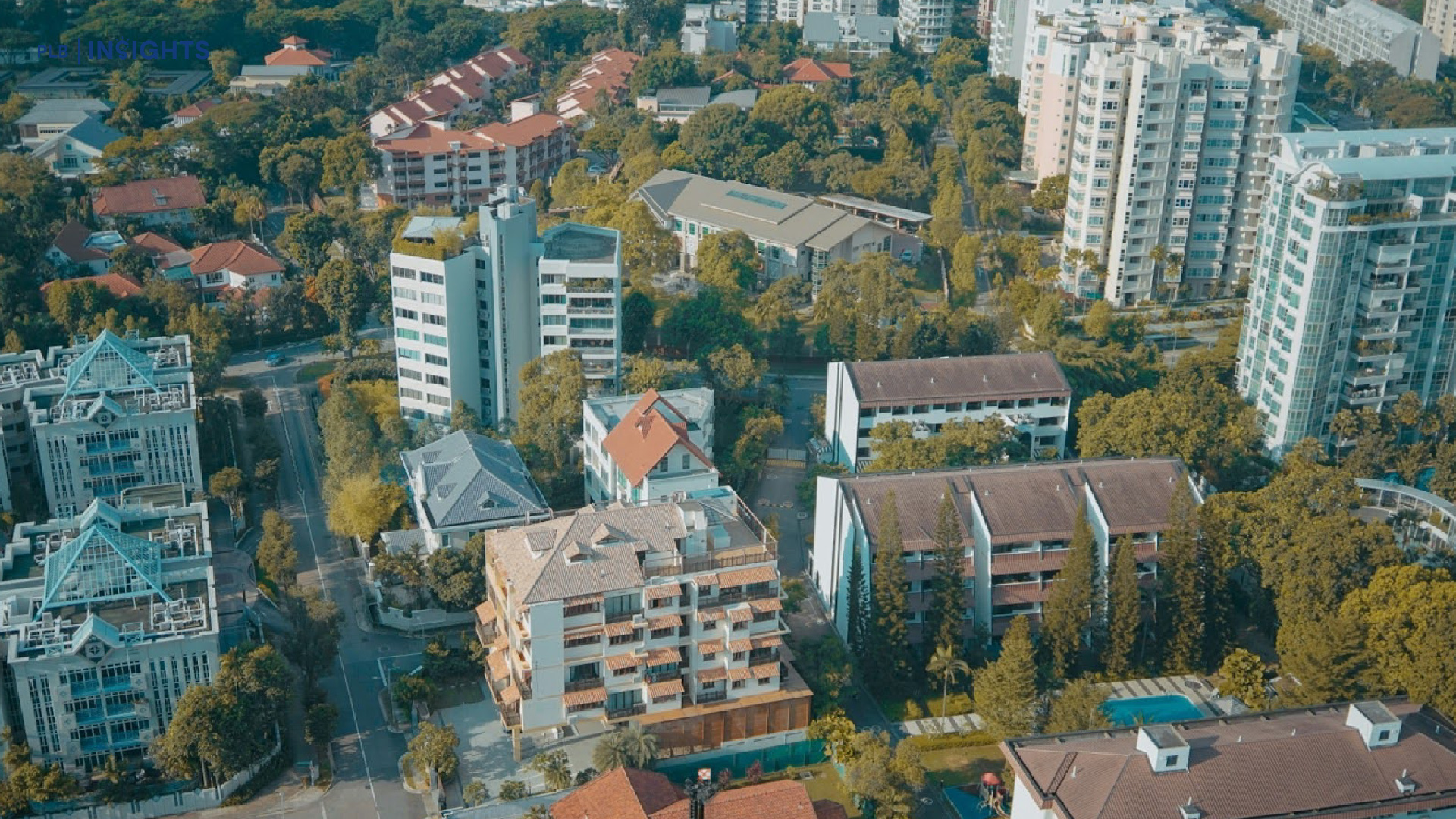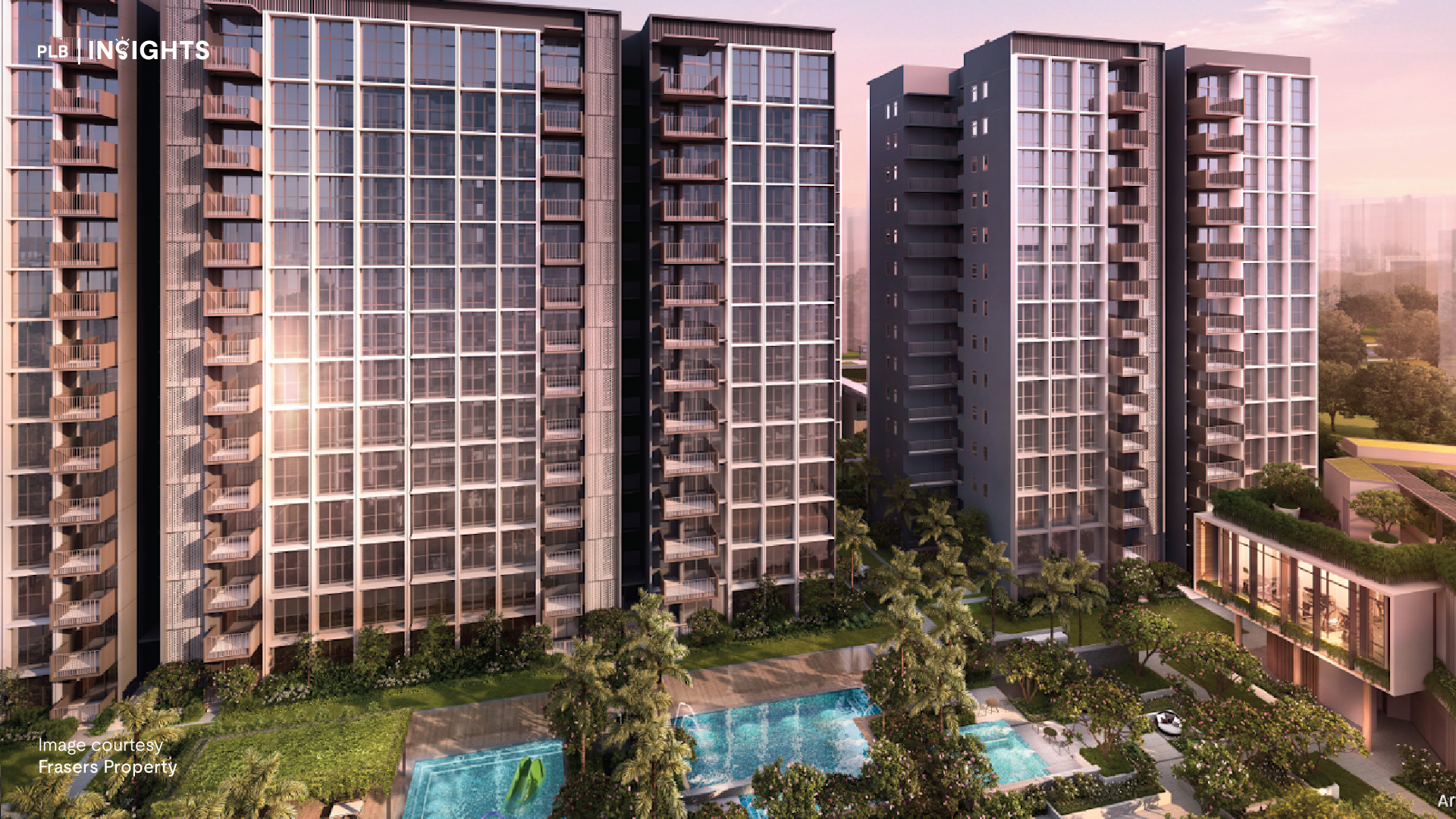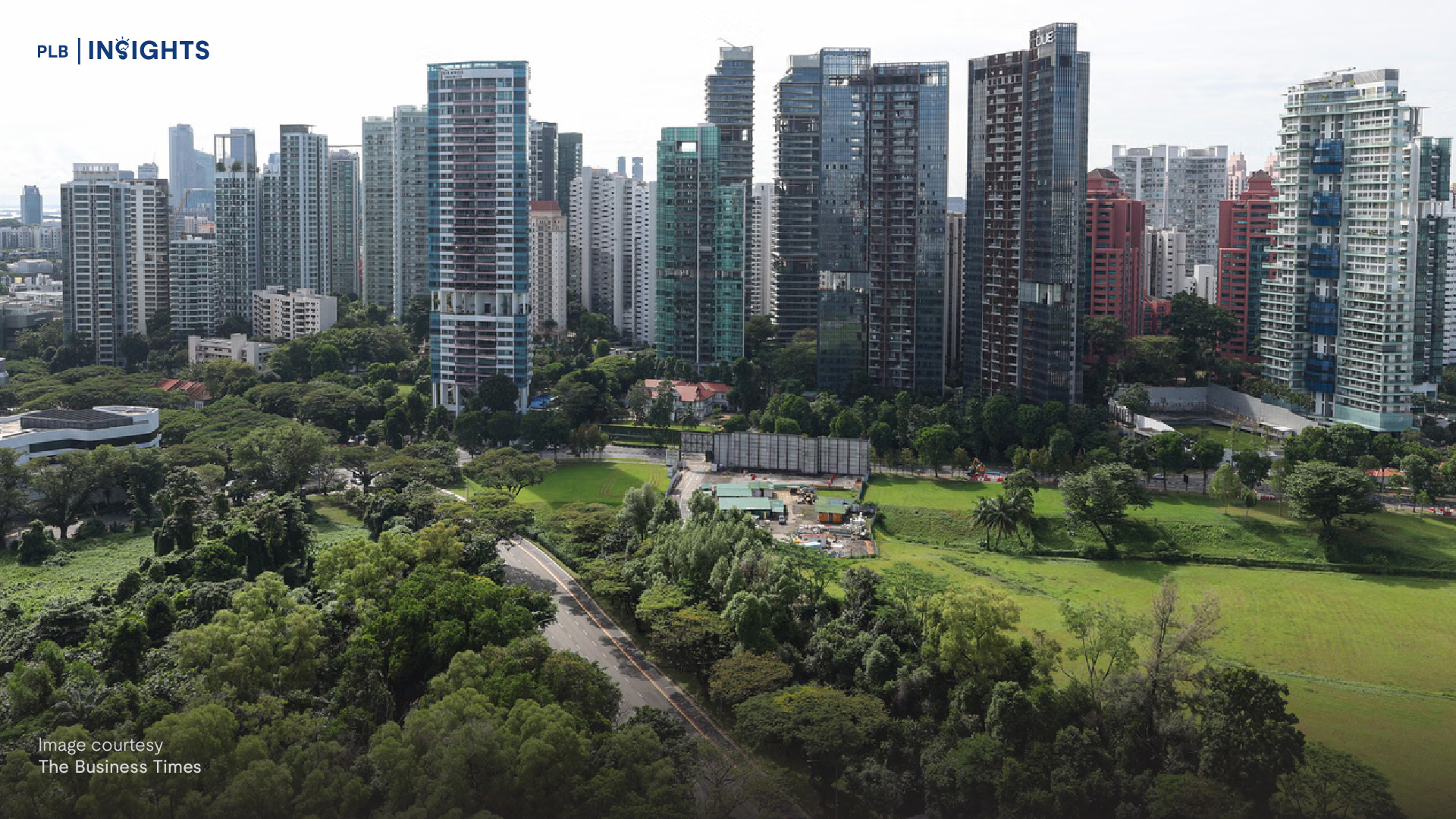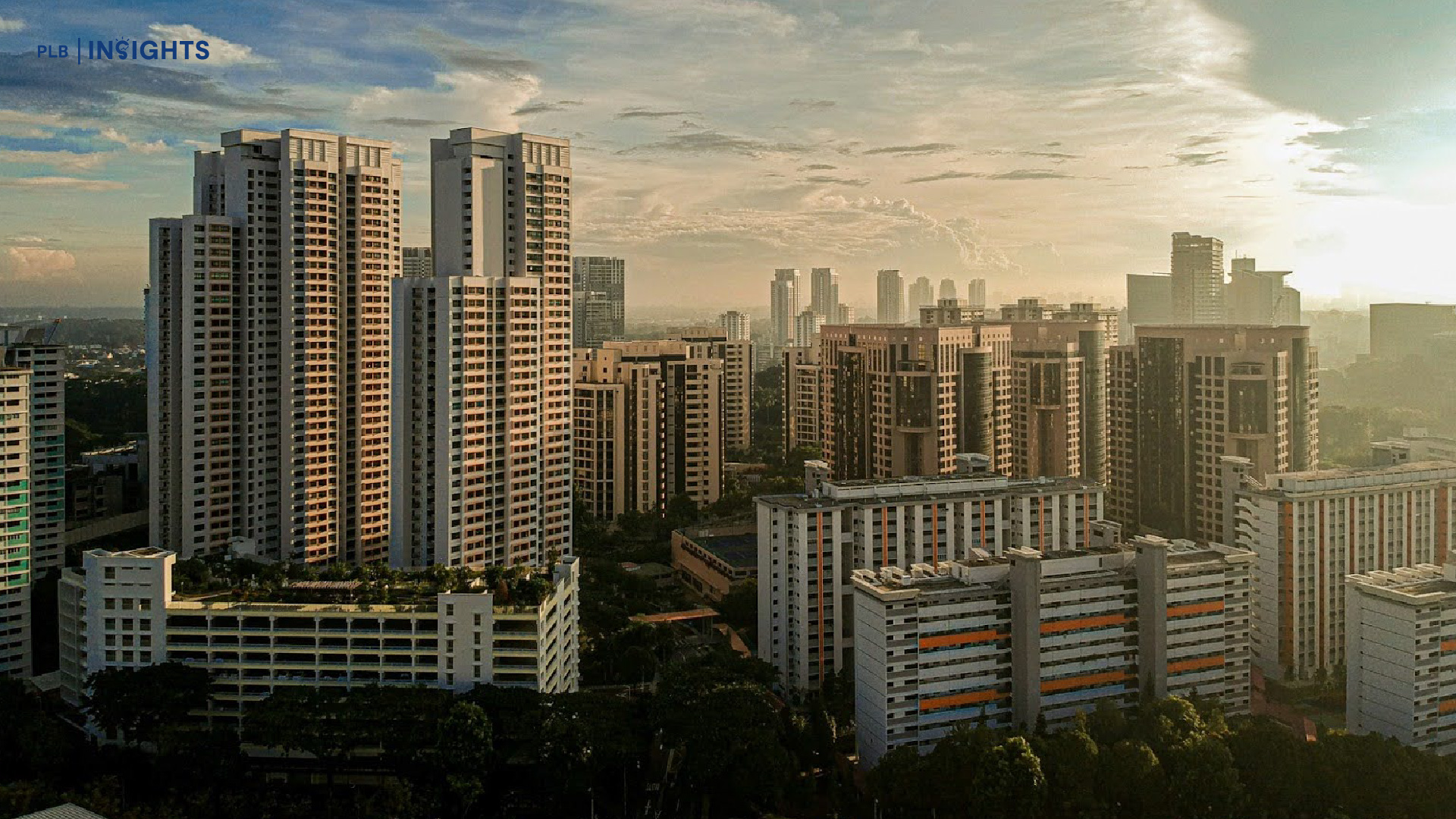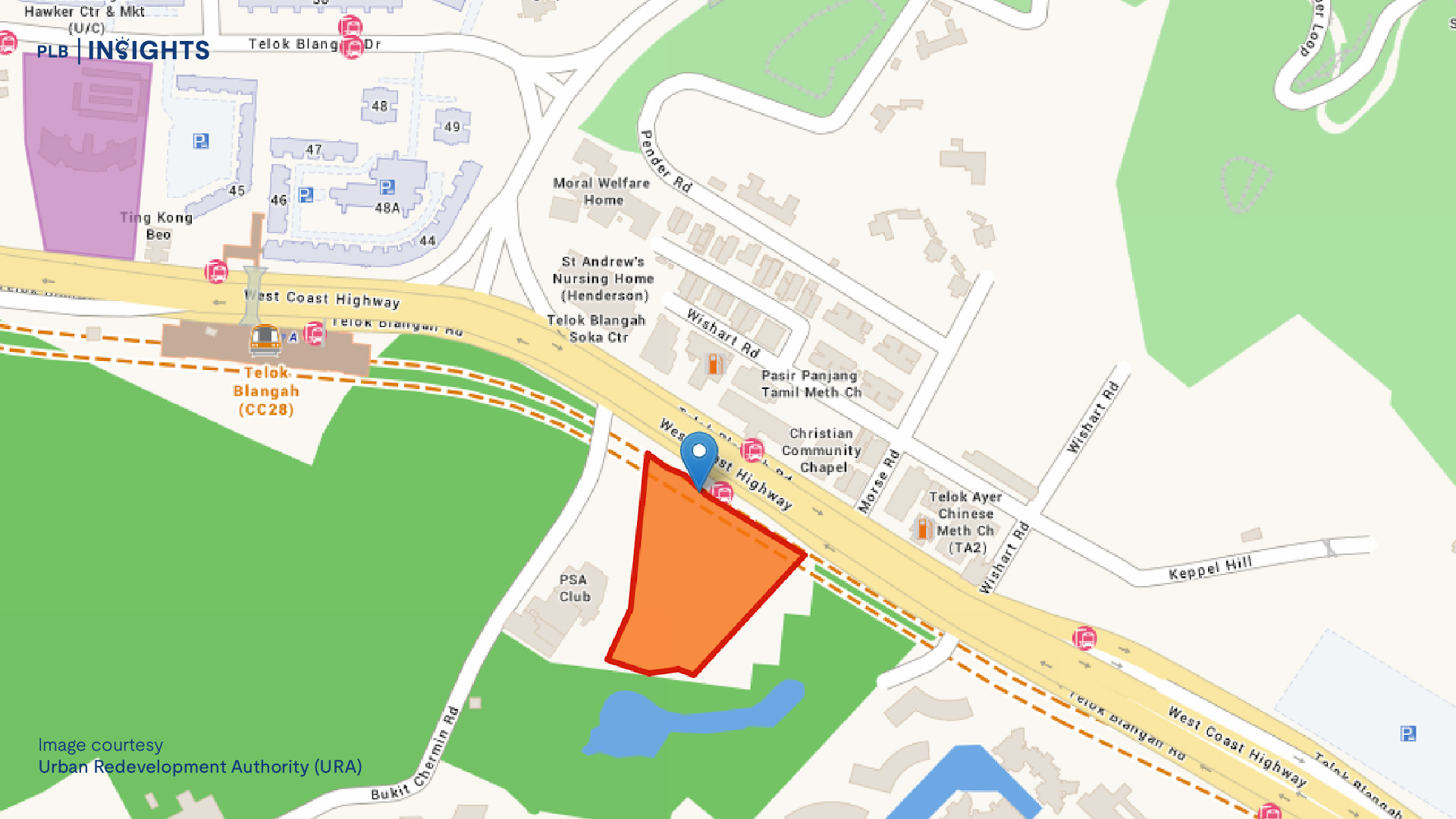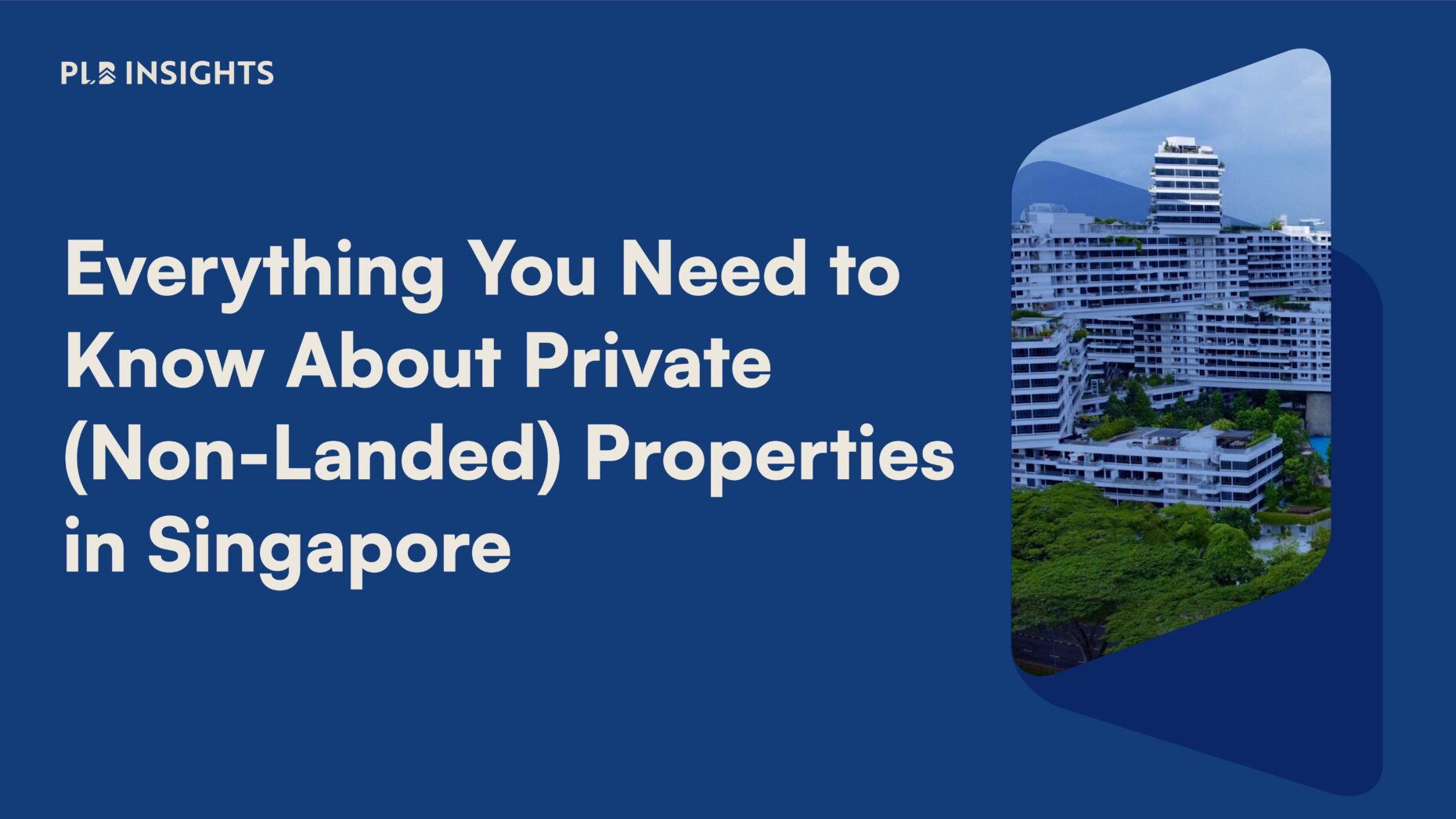
Welcome back to our guide to the different housing types available in Singapore. Take a quick guess on how many different private properties there are, and stay tuned to the end to see whether you close! Previously we covered public housing offered by HDB. In this article, we will be covering all things private (non-landed) properties related!
What makes Private Properties Private?
To understand what makes private properties private, it’s essential to highlight the key differences between public and private housing. While the property tenure functions the same, here are the three most significant differences.
1. Scope of Ownership
What does it really mean to own an HDB flat? HDB owners own exclusive rights to their particular units and nothing else. Common areas such as corridors, playgrounds, and other estate spaces are the responsibility of the respective town councils, who are in charge of their upkeep and maintenance.
For private developments, owners typically own a strata or land title. Most private property owners own the former, whereas land titles are exclusive to landed property owners.
2. Subsidies, Loans & Housing Grants
Since HDB provides public housing with affordability in mind, HDB flat owners may be eligible for certain subsidies and CPF housing grants. These owners can also borrow from HDB or other financial institutions. HDB loan takers can expect a lower interest rate than other loan alternatives since the government backs HDB loans.
On the other hand, private homeowners can only obtain loans from financial organisations that rely on the worldwide market. Note that those seeking loans can expect higher bank loan rates due to the increase in federal interest rates. Executive Condominiums (ECs) which are a hybrid type of private and public housing, will have grants available as well. But will not be eligible for a HDB Housing Loan.
3. Income Ceiling
Another significant difference between public and private housing is the income ceiling. While there are income ceilings for purchasing new flats from HDB, there is no such restriction for private properties. This means anyone can buy private properties, regardless of income level.
In contrast, to be eligible for a new flat or EC from HDB, the monthly household income ceiling varies depending on the flat type, project, and whether the purchase involves extended or multi-generation families. For instance, the monthly household income ceiling ranges from $7,000 to $21,000 for HDB flats, depending on the specific criteria.
Therefore, private properties offer more flexibility regarding eligibility criteria and are an excellent option for those not meeting HDB’s income requirements. However, it is essential to note that private properties are typically more expensive than public housing.
Strata Titles vs Land Titles
The Land Titles (Strata) Act of 1967 introduced strata titles and allowed buildings to be subdivided into individual units owned by different parties. In contrast, land titles refer to the ownership of the land rather than any buildings or structures on the land. Owners of land titles have the sole right to the land and can use it for whatever purposes are allowed under relevant zoning and planning regulations.
Unlike strata titles, land titles typically do not include facilities or amenities beyond what can be built on the land, such as a swimming pool or gym. Owners of land titles are responsible for managing and maintaining their property, including any structures or buildings on the land, and seeking necessary approvals from relevant authorities for any major works.
In comparison, the Management Corporation Strata Title (MCST) manages and maintains the common property in a strata-titled development. Each unit owner must pay a monthly maintenance fee to the MCST, which contributes to the sinking fund used for the maintenance and management of the common property. The sinking fund covers major repairs and replacements to the common property, such as repainting, roof repairs, or lift replacements. Although individual unit owners do not own the common areas, they have a collective ownership interest in these areas through their share value in the development. The MCST represents this collective ownership interest.
Aside from the Land Titles (Strata) Act, many other regulations affect private properties.

History of Private Properties in Singapore
The history of private properties in Singapore can be traced back to the 19th century when the British introduced shophouses and bungalows as early as the 1830s. In the early 20th century, the government introduced regulations controlling private property development.
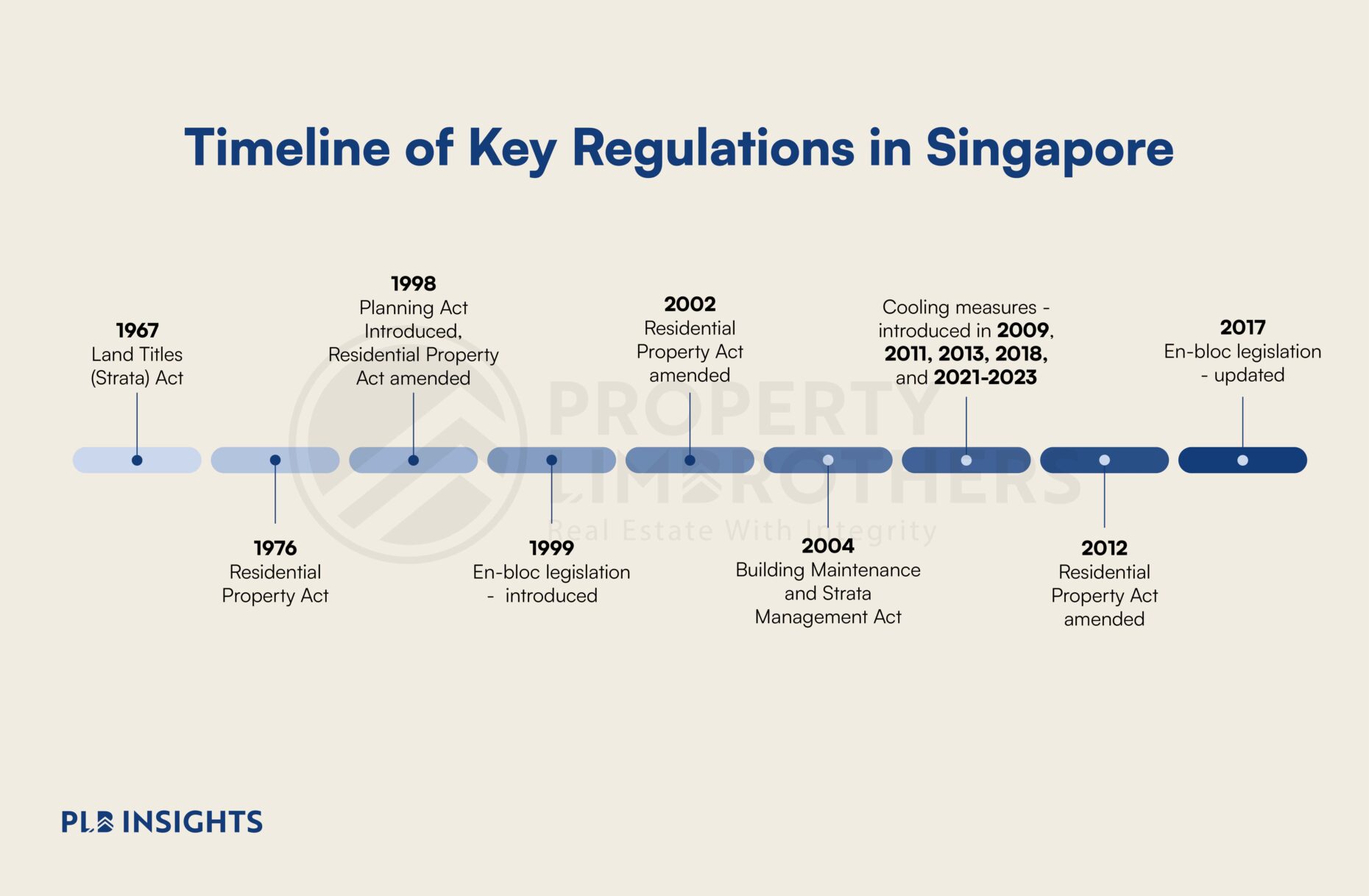
The Planning Act of 1998 introduced a more comprehensive approach to planning and development control in Singapore, which impacted the development and use of private properties.
The Building Maintenance and Strata Management Act of 2004 followed, regulating the management and maintenance of strata-titled properties and introducing new regulations on the conservation of buildings in Singapore. This act required owners of private properties to ensure proper care and conservation to prevent disrepair while creating a maintenance fund and appointing a qualified person to oversee the work.
The Residential Property Act, enacted in 1976 and amended several times since then, imposed restrictions on foreign ownership of private residential properties.
The en-bloc legislation, introduced in 1999 and updated in 2017, facilitated collective sales of ageing private properties, allowing for the redevelopment and revitalisation of old estates.
Lastly, cooling measures were introduced at various points since 2009 to curb excessive speculation and stabilise the property market, which significantly impacted the buying and selling of private properties in Singapore.
How many types of private (non-landed) properties are there?
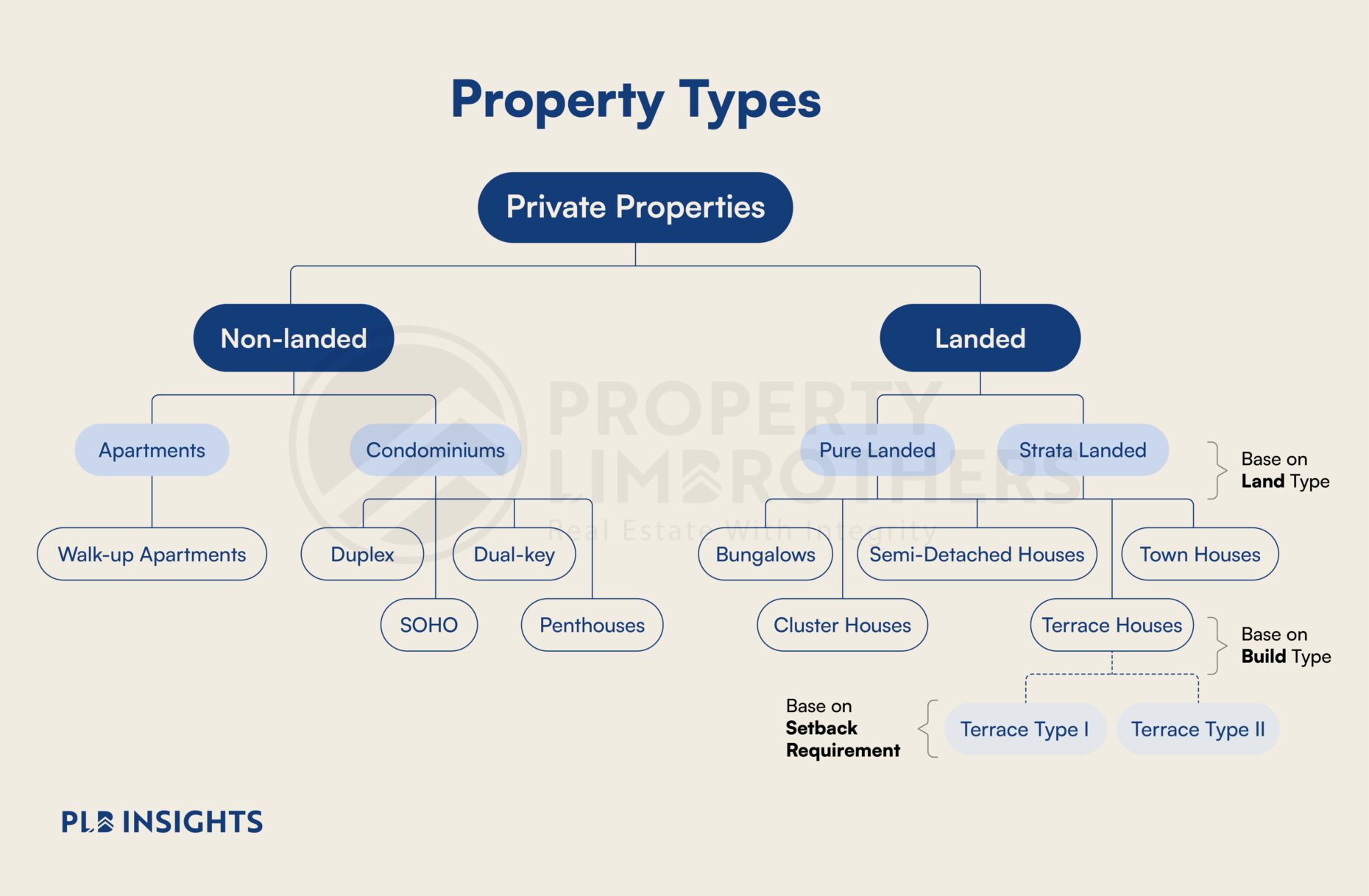
1. Apartments
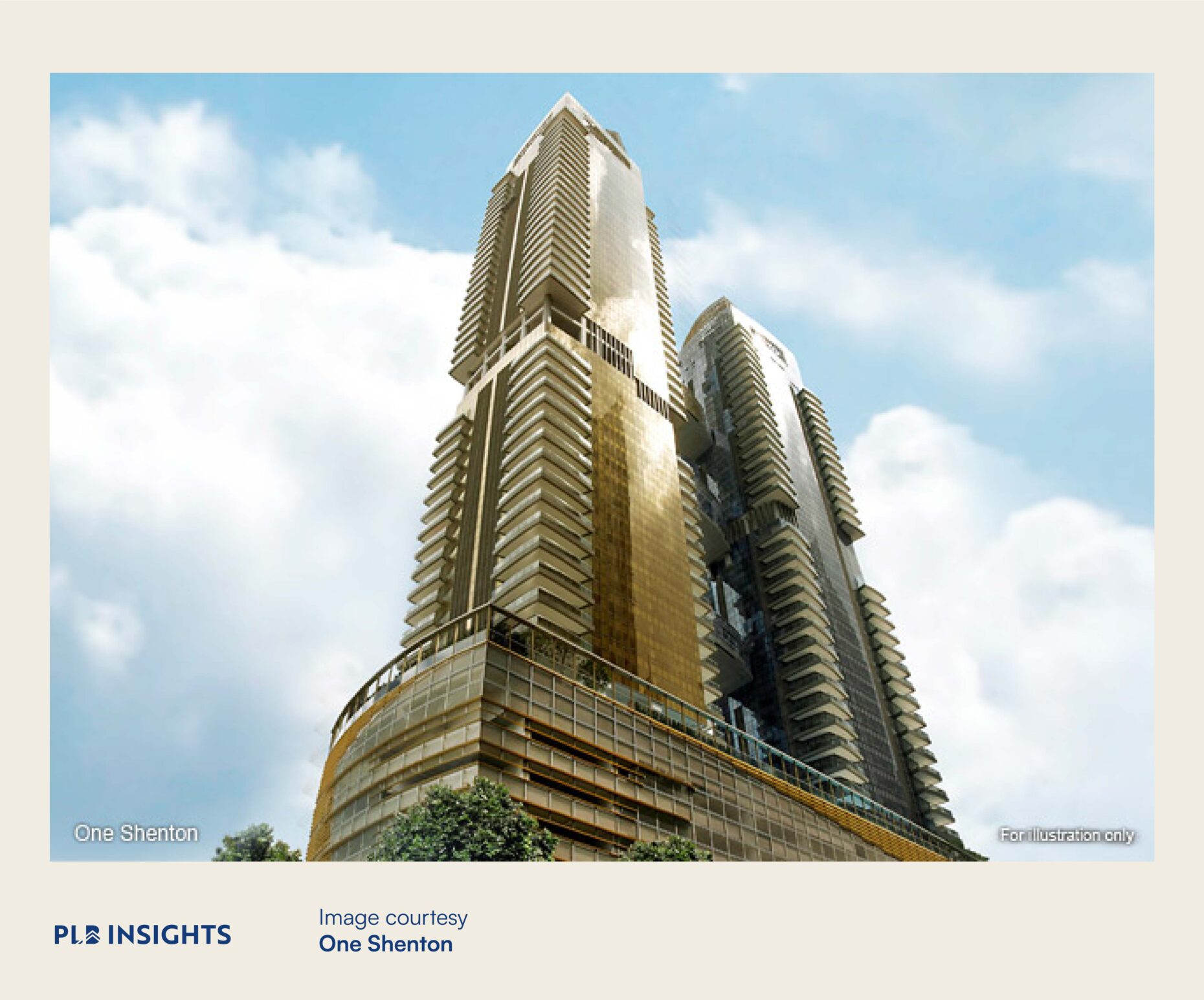
Apartments are similar to condominiums, and while they are traditionally thought of as smaller developments, there are new launch, resale, and subsale projects that are of apartment status and condo status. Furthermore, there are developments that break the mould – huge projects like Bartley Residences (704 units) and Kingsford Waterbay (1,165 units) that fall under the classification of apartments as well.
Essentially, the status of the development – whether they fall under apartment or condominium status, depends on fulfilment of setback requirements, etc and not the land or project size.
2. Walk-up Apartments
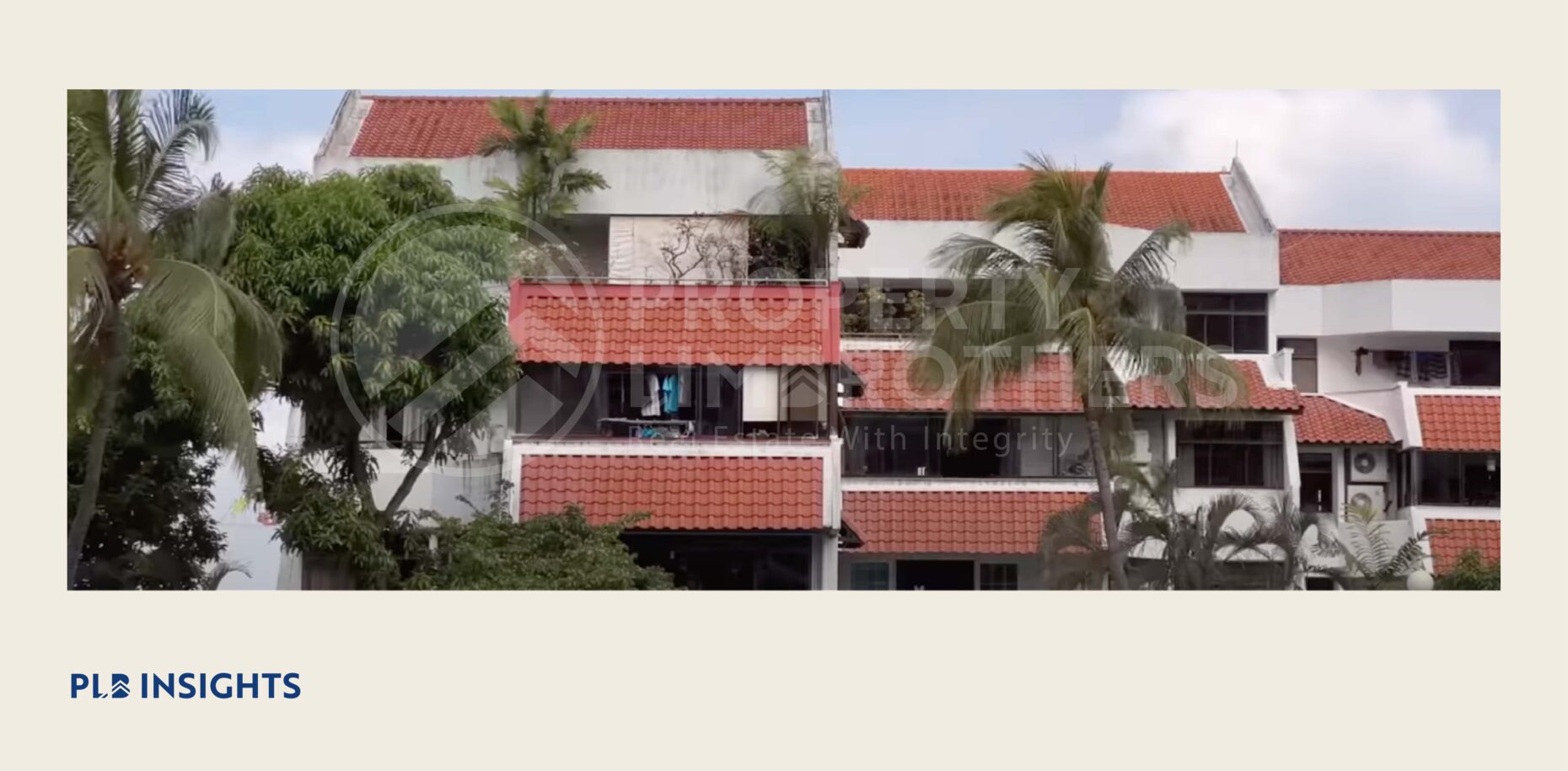
Walk-up apartments are low-rise buildings built before World War II and generally older, with 40-60 years left on the lease. These houses are often referred to as pre-war Singapore Improvement Trust (SIT) flats by the URA, and their facades must be conserved according to URA guidelines. As the name suggests, walk-up apartments have no lifts, making them unsuitable for older people and the less mobile. Furthermore, moving furniture in and out of these properties can be a hassle due to the absence of elevators. However, the good thing about walk-up apartments is their location. They tend to be in popular areas such as Tiong Bahru, Marine Parade, Novena, and Farrer Park.
Read more about walk-up apartments here or join Grayce as she brings you around one in the Serangoon Garden Estate!
3. Condominiums
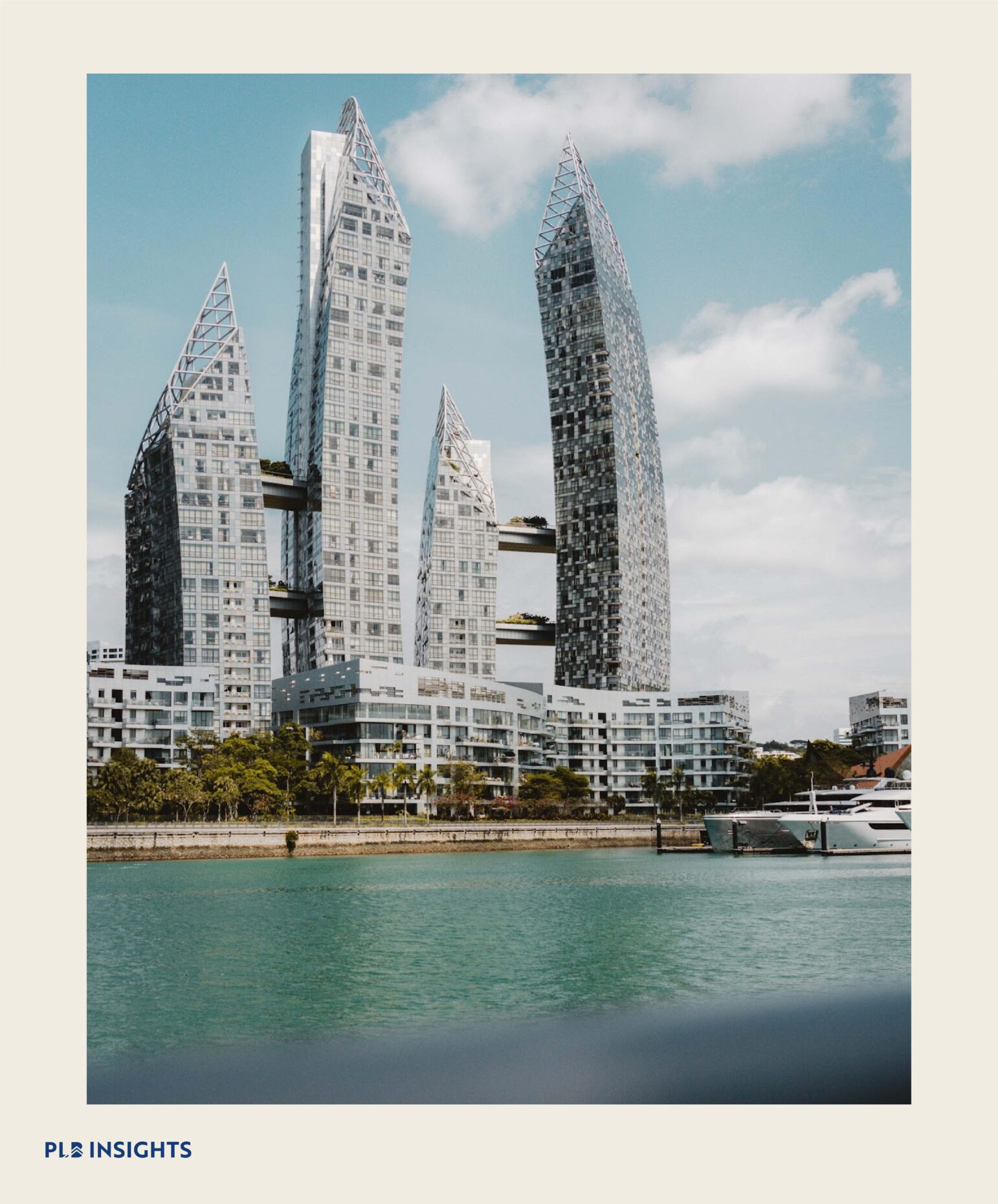
While condominiums may have a minimum site area of 4,000 sqm, mega projects can be the size of over 5 football fields!
In terms of site area, the highest density private condominium in Singapore is probably The Interlace, which is located in the southern part of Singapore. It has a site area of approximately 80,000 sqm and comprises 1,040 units. The Interlace is known for its unique and innovative design, which features 31 apartment blocks arranged in a hexagonal ‘lego’-like pattern.
The largest private condominium in terms of number of units is likely to be Treasure at Tampines, located in the eastern part of Singapore. It has a site area of approximately 60,000 sqm and comprises of 2,203 units. Expected to TOP in 2023, the project has a grand total of 29 blocks.
The Interlace and Treasure at Tampines are prime examples of how former public housing estates can be transformed into modern residential marvels. These two developments have successfully clinched the titles of largest site area and number of units, respectively, showcasing their impressive scale and grandeur. It’s amazing to see how these former HUDC estates have undergone such a dramatic transformation, and it’s a testament to Singapore’s commitment to urban development and revitalization.
Check out this video as Grayce showcases a 2 bedroom unit at The Interlace.
When it comes to private properties in Singapore, you may notice that the terminology used for room types is different from that of public housing or HDB. In private condominiums, a three-room unit would typically refer to a space that comprises a living room and 3 proper bedrooms. This is different from HDB flats, where a three-room flat is referring to a unit with 1 living room and 2 bedrooms.
In addition to this difference in room type terminology, private condominiums also offer a range of unit types to cater to different preferences and needs. For instance, there are unique unit types such as duplexes, dual-key, penthouses, and cluster houses.
a. Duplex
A duplex is a type of private condominium unit in Singapore that spans across two levels connected by an internal staircase. While duplexes are commonly found on penthouses, they can also be located in middle-level units or ground levels. With various combinations of condominium types available, duplexes offer unique living arrangements and are popular with families or those seeking a more spacious living environment. The flexibility of their location within a building allows for greater options when choosing a unit that best suits individual preferences and needs.
b. Dual-key
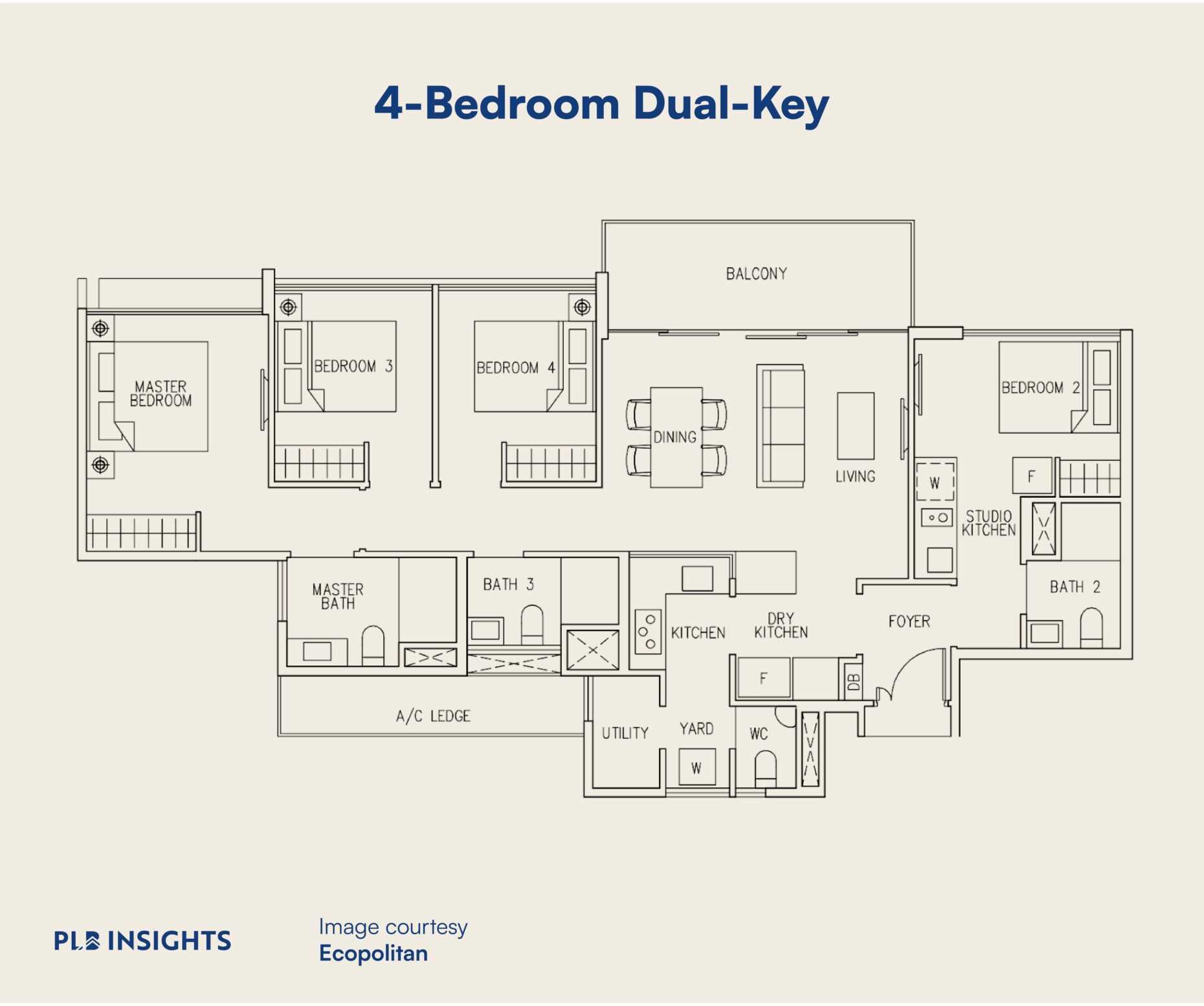
Dual-key units in Singapore have become increasingly popular in recent years, and for good reason. These units feature two separate living spaces with their own entrances, allowing for greater flexibility and privacy. This is particularly appealing for those who may be interested in a part stay, part rent strategy, where one living space can be rented out for additional income while the other is used for personal living.
The dual-key concept is also suitable for multi-generational families who wish to live together but still maintain some degree of independence. Whether for investment purposes or for personal use, the dual key unit has proven to be a popular choice among buyers who value both flexibility and privacy in their living space. Note that simpler to a duplex, there are many combinations of unit types such as dual-key penthouses.
c. Penthouse
Penthouses are top floor units with many different variations available in Singapore:
- Duplex penthouses: have living space on level one and a roof terrace on level two;
- Single loading penthouses: features a large single-level floor space;
- Evenly split duplex penthouses: Have living space on both levels and a roof terrace or additional bedrooms on level one; and
- Triplex penthouses; spans across three levels with living areas on the first two and a roof terrace or private pool on the third.
Penthouses have gained popularity among high-net-worth individuals, families, and those seeking a premium living experience due to their luxurious and spacious living arrangements in prime locations. These units offer a high level of exclusivity and are designed to provide a comfortable and lavish lifestyle.
Watch as Melvin Lim and Adrian Lim takes you through a rare triplex penthouse at Starlight Suites!
d. Cluster houses
Lastly, cluster houses can also be found in some condominium developments. While these fall under the category of strata-landed properties (landed property that holds strata titles instead of land titles), they are still considered as part of certain condominium projects. Owners of cluster houses get to enjoy landed living while having the perk of condo facilities.
Cluster houses are typically built in groupings relatively close to each other, and can take on the form of terraced houses, semi-detached houses, or even bungalows.
Follow John as he tours a 4-storey freehold landed cluster house at Whitley Villas!
Final Thoughts
After delving deep into the world of private properties in Singapore, it’s clear that potential buyers have an incredible range of options to choose from. Whether you’re looking for a swanky condominium with all the amenities or a charming landed property with a cosy backyard, there’s something for everyone. Stay tuned for our final part covering private (landed) housing types!
It’s important to note that navigating the world of private properties can be a daunting task, especially for first-time buyers. However, with the right guidance and support, the process can be a lot smoother and more enjoyable. If you wish to enquire about a certain property unit, feel free to contact us here. Till next time!

